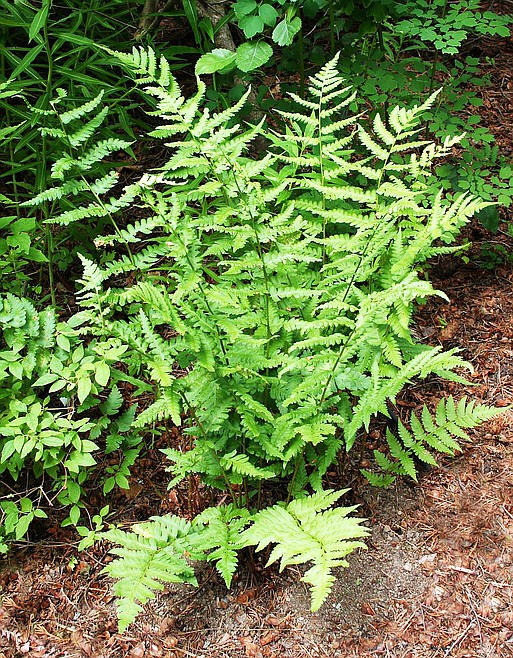Crested Shield Fern thrives in shady gardens
In 1848, Asa Gray, considered by many to be the most important American botanist of the 19th century, named and published a description of Crested Shield Fern (Dryopteris cristata), a lovely, rich green, semi-evergreen found in moist woodlands in much of the Northern Hemisphere.
Also called Crested Wood Fern and Narrow Swamp Fern, Crested Shield Fern has both sterile and fertile fronds. This non-flowering plant produces irregular rows of spores in round to kidney-shaped clusters called sori on the underside of the fertile fronds. These fronds die after the spores ripen and disperse, but the sterile fronds remain as a rosette through the winter.
In the spring, new fertile fronds unfurl from the central rhizome. Called fiddleheads, they resemble the scroll end of a miniature violin, bright green with irregular brown flaky scales. The fertile fronds are larger than the male fronds, reaching one to two feet. All fronds have many leaflets branching off the main stem. Each leaflet is also divided into smaller leaflets with spiky teeth on their ends. Botanists call this type of leaf doubly pinnate or bipinnate. The leaflets on the fertile fronds are unusual in the fern world. As they extend from the rising central stem, they tilt horizontally, resembling stairs on a staircase.
Crested Shield Fern is deer resistant and not subject to disease. It thrives in moist shady woodlands and riparian zones, but will thrive in a shaded garden setting with regular watering. It is a good choice near streams or water features in cottage and native gardens. Cut back the fertile fronds as they begin to die back, leaving the male fronds which will remain evergreen.
Fiddleheads, picked in the spring, have been used as a cooked green vegetable, although eating too much can cause stomach ache in some people. The roots contain many anti-inflammatory, antiviral, and antibacterial properties, however they should used with caution. Crested Shield Fern is an effective treatment for tapeworm and other internal parasites.
Crested Shield Fern grows in the Interior Rainforest Habitat of the North Idaho Native Plant Arboretum, 611 S. Ella Ave., in Sandpoint. Pictures and a description are on page 208 in “Landscaping with Native Plants in the Idaho Panhandle,” a KNPS publication available at local bookstores and the Bonner County History Museum.
Native Plant Notes are created by the Kinnikinnick Native Plant Society. To learn more about KNPS and the North Idaho Native Plant Arboretum, go online to nativeplantsociety.org.

